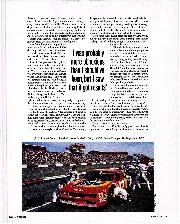“The local track owner in Danville ensured he wasn’t in there for long,” says Warrick. “He had a crazy idea: he wanted all the African-American drivers to come and race at the local fairgrounds, so asked the police for the top 10 with speeding records.”
But this wasn’t a charitable offer. “At that time,” adds Warrick, “an African American being offered an opportunity like that was considered a death wish. The track owner was to sell twice the tickets, sit back and watch the rest of the drivers essentially lynch him. It wasn’t designed to turn him into a NASCAR Hall of Famer, but to provide entertainment – one black guy in a field of 40 drivers intent on running him off the track.”
Wendell was confident of his own racing prowess, having often been chased at high speed through dusty back roads, and began racing regularly in 1947 after borrowing money from his brother-in-law. He competed at local fairgrounds and dirt tracks throughout Virginia and North Carolina, sometimes facing death threats even before he entered the gates.
He began racing on the NASCAR circuit in 1950, working his way up to the Modified Division in 1954 before becoming Sportsman state champion in 1959. By 1961 he was competing in the top-tier Grand National Series, making his debut at Spartanburg and being classified 17th after oil pressure problems.
It’s important to note that a family-run crew with one race car – almost always an old model that had been bought – was competing against the likes of the Pettys, and Junior Johnson.
“My brother and I both looked older than we were, so we were able to get a licence to work in our father’s pit crew,” says Frank. “We were young, athletic individuals, fast and strong, but we didn’t have the same equipment as some crews. You’d think all jacks are the same, for example, but they weren’t. Ours would take four to five pumps to get the jack to maximum height, but rivals needed only three. We couldn’t even afford tyres a lot of the time. Manufacturers were giving them to the top teams, while we’d get used rubber.”

A local track owner got Scott out of jail, and thus his racing career began
ISC Images & Archives via Getty Images
Wendell was, however, helped by fellow racers who donated parts otherwise destined for the scrap yard. Ned Jarrett and Rex White were among those who would contribute, leaving Scott’s team to restore them to a useable status and Frank to repaint them as though they were new.
In 1965, the Spartanburg Herald reported that he was given a brand-new car for the National 400 in Charlotte, a big step up. The donor remained anonymous, but Wendell was grateful. “Having a new car for the National 400 could be the best thing that has ever happened to me,” he told the Herald.
But off the track, he continued to face hostility in a still segregated nation.







